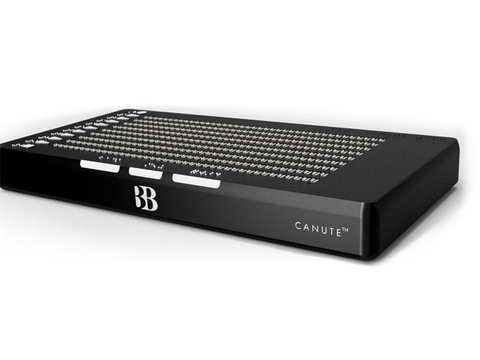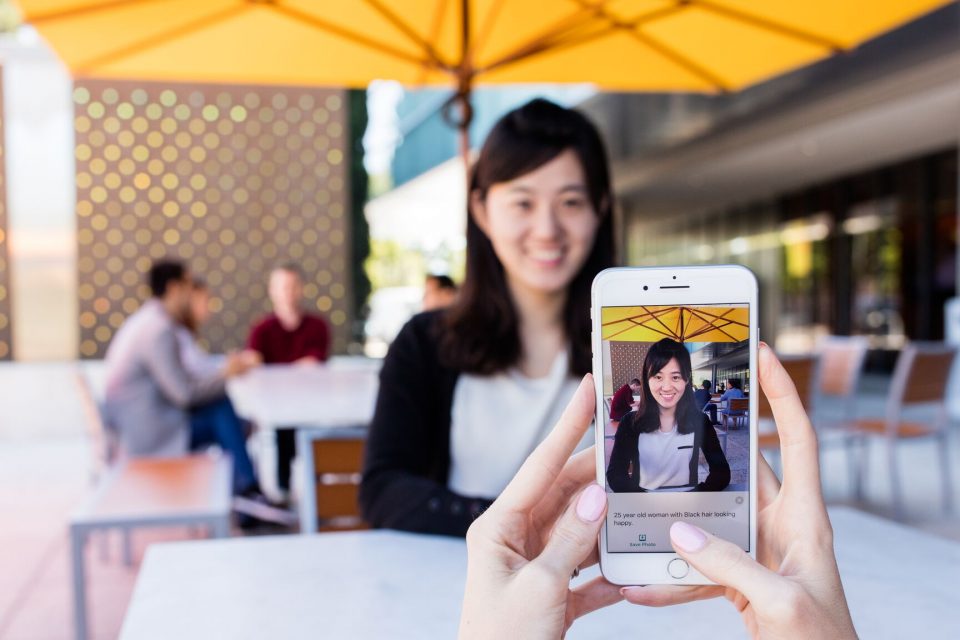OCR Devices for the Blind: Converting Text into Speech with Ease
OCR Devices for the Blind: Converting Text into Speech with Ease
Blog Article
Empowering Freedom With Assistive Innovation for the Blind
The assimilation of assistive innovation right into the lives of individuals with aesthetic impairments represents a considerable advancement in advertising independence and self-sufficiency. From innovative screen readers to sophisticated smart walking canes, these tools not only boost daily navigation and interaction however additionally equip customers to involve meaningfully in various aspects of life. As we discover the myriad advantages and real-world applications of these innovations, it comes to be vital to take a look at the underlying variables that add to their performance and the potential for future growths in this essential area.
Review of Assistive Innovation

The advancement of assistive modern technology is grounded in concepts of inclusivity and empowerment. Innovations in software, hardware, and sensory enhancements supply customers with options tailored to their details needs. From display visitors that transform text to speech, to tactile tools that share information with touch, these devices change the way individuals involve with their surroundings.
Along with practical applications, assistive modern technology cultivates greater social addition and engagement in various markets, including education and work (Mobility aids for visually impaired users). As r & d proceed to advance, the possibility for assistive innovation to better boost the lives of aesthetically damaged individuals remains promising, leading the way for an extra fair society where everybody can grow
Kinds of Assistive Devices
A selection of assistive tools have arised to sustain people with aesthetic impairments, each created to meet specific needs and improve day-to-day performance. These gadgets range from low-tech services to modern developments, offering diverse choices for customers.
Low-tech tools include magnifiers and large-print materials that help in analysis and writing. Braille devices, such as Braille styluses and slates, allow tactile analysis and interaction. Alignment and movement aids, like white walking sticks, aid users navigate their atmosphere securely.
On the greater end of the range, electronic magnifying systems and display readers offer significant support. Digital magnifiers permit individuals to enlarge message and photos on displays, while screen viewers convert digital content right into synthesized speech, promoting accessibility to information on computer systems and smart devices.
Smartphone applications likewise play an important duty, giving attributes like text recognition and navigating support. Wearable modern technology, such as clever glasses equipped with enhanced fact, is emerging as an appealing device to enhance situational understanding.
Advantages of Assistive Modern Technology
The combination of assistive technology dramatically improves the high quality of life for individuals with aesthetic impairments. These innovations empower users by promoting freedom, allowing them to navigate their environments more successfully and carry out daily jobs with greater convenience. As an example, screen visitors and magnifying software application allow individuals to access electronic information, promoting professional and educational chances that may have formerly run out reach.
In addition, assistive gadgets such as clever walking canes and GPS applications offer real-time navigation aid, enhancing mobility and safety and security. This boosted freedom not just read this article boosts self-esteem yet likewise motivates social involvement, allowing users to take part even more fully in their areas.
Assistive innovation additionally promotes communication, assisting users get in touch with others through voice acknowledgment and text-to-speech applications. This ability is vital for maintaining connections and accessing crucial information.
In addition, the customization choices offered with many assistive technologies ensure that users can tailor tools to their details requirements, additionally improving usability and performance. On the whole, the benefits of assistive technology for individuals with visual impairments are profound, advertising a more comprehensive society where everyone can pursue their aspirations and objectives.
Study and Success Stories
Highlighting the transformative impact of assistive technology, countless study show how people with aesthetic problems have actually effectively incorporated these devices right into their every day lives. One engaging instance entails an university student who utilized display analysis software application to navigate on the internet sources and academic materials effectively. This modern technology not only promoted her education but likewise improved her self-confidence in getting involved in discussions and team projects.
One more study includes a specialist that uses a mobile phone application designed for navigation and things acknowledgment. By using this application, he has gained back freedom in both his personal and job settings, permitting him to commute have a peek at this site independently and involve with colleagues better.
In addition, a senior citizen shared her experience with braille e-readers, which enabled her to access a huge range of literary works and remain connected with her community through book clubs.
These success stories underscore the vital function of assistive modern technology in cultivating self-reliance, boosting top quality of life, and promoting social combination for people with visual problems (OCR devices for the blind). By embracing these ingenious devices, users can get rid of difficulties and take possibilities that add to their expert and individual gratification

Future Trends in Assistive Technology
Advancement in assistive modern technology is positioned to redefine the landscape of support for people with visual impairments. Arising trends emphasize the combination of expert system (AI) and equipment knowing, which enhance the functionality of devices that assist with navigating and info ease of access. As an example, AI-driven applications are currently with the ability of analyzing visual data in real-time, allowing individuals to involve with their setting a lot more separately.
Moreover, the development of wearable innovation is progressing quickly. Smart glasses furnished with enhanced fact (AR) can give audio descriptions of environments, changing just how individuals engage with public rooms. These devices not only promote autonomy but also foster social incorporation.
Furthermore, the Net of Things (IoT) is making homes smarter, enabling seamless connectivity in between assistive devices and daily appliances. This connection empowers users by making it possible for computerized responses and voice-activated controls tailored to private requirements.
Conclusion
To conclude, assistive innovation plays a crucial function in encouraging people with aesthetic problems by boosting their independence and engagement with their environments. The varied variety of applications and tools offered not just facilitates navigation and interaction yet likewise advertises social integration and chances for personal and professional development. As improvements continue in this area, the capacity for improving the quality of life for those with visual problems will expand, fostering greater freedom and empowerment.

Report this page